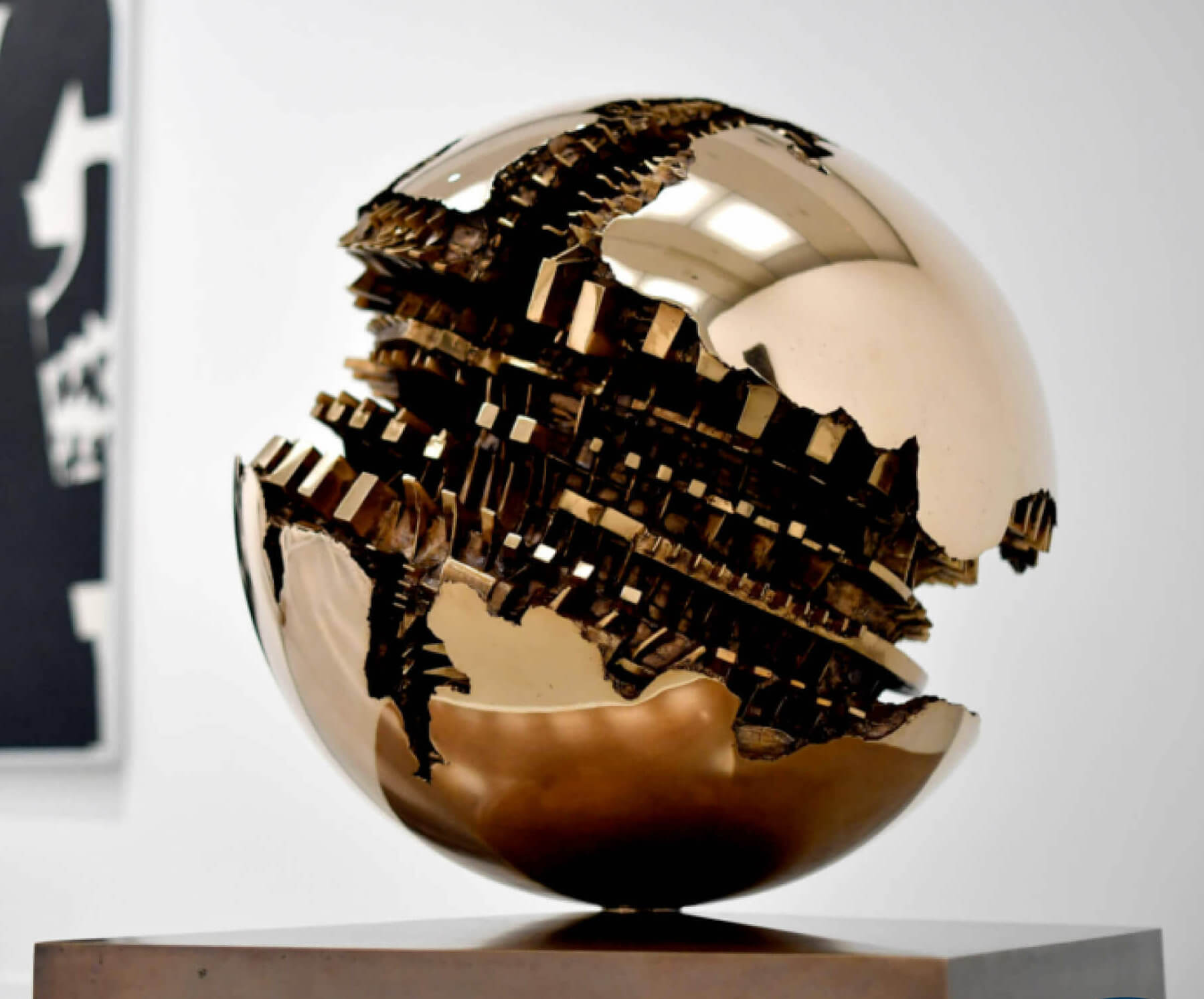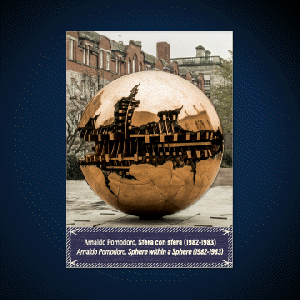Arnaldo Pomodoro’s workshop, a magical place in the heart of Milan



Here is what the artist says about his spheres:
In my sculpture, inside the form of today’s world I put the form of the “ideal city” as it was already thought of by the artists of the Italian Renaissance. In this, there is my hope or dream, as of so many other citizens of the world. And this is entrusted to the institution that represents human rights.
The sphere is a wonderful object, the sphere comes from the sorceress, from the magicians, whether it’s glass or whether it’s bronze, whether it’s full of water; and also the sphere is the womb, I think… The sphere is an extraordinary object because it reflects whatever is around it and creates such contrasts that sometimes it transforms and no longer appears, instead its interior remains, tormented and corroded, full of teeth, and some say it is an element that can be hooked to technology, I don’t know, it’s strange the relationship… Everything inside the sphere is just energy in a form. The sphere can also represent the earth; the sphere can represent the world, the world today which can be corroded by technological civilization. I don’t know: I wish that, looking at the sphere, there is in the interior this vitality; and one can also visualize the fact that the sphere can split, like a force field. This is what moves me to make spheres: to break these perfect and magical forms to discover (search for, find) their inner fermentations, mysterious and living, monstrous and pure; thus I provoke with the polish a contrast, a discordant tension, a completeness made of incompleteness. In the same act, I get rid of an absolute form. I destroy it. But at the same time I multiply it. The work can then be read continuously, from day to day; and thus possesses, in my opinion, its best continuity: that it does not simply respond to consumption, but rather responds to a need for discovery that is in everyone and that in everyone is unsatisfied by industrial mechanicality. It is important that my spheres can also be moved, rotated: they thus also have “under the hands” the value of movement and participation that they have in visuality.
Arnaldo Pomodoro “Sphere within a sphere” for the U.N. Headquarters, Il Cigno Galileo Galilei, Rome, 1997, pp. 14-15. The work “Sfera con sfera” featured on the Art and Science sticker album is 2 meters in diameter and is in Dublin, at the Berkeley Library of Trinity College. There is an example of “Sfera con sfera” 330 cm in diameter installed in 1996 in front of the United Nations Building in New York.